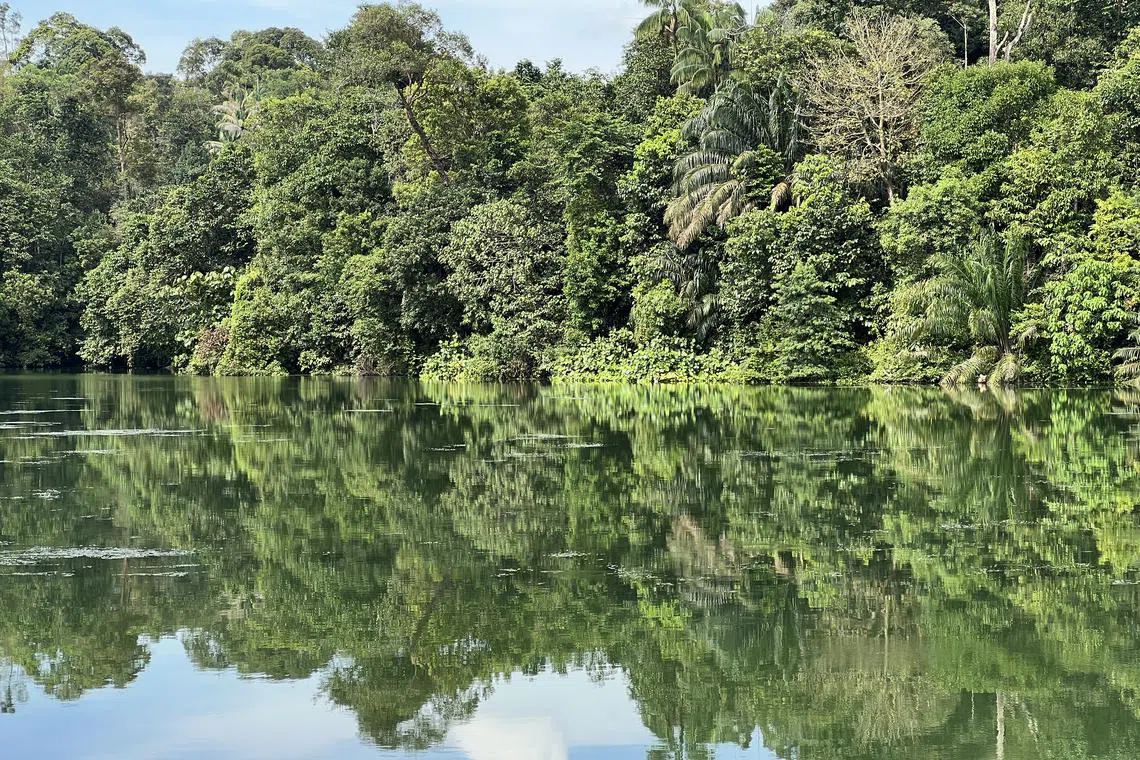Reforestation could boost water security in vulnerable regions in the Asia-Pacific: Study
Sign up now: Get ST's newsletters delivered to your inbox

Further studies are needed to determine the impact of reforestation on the region’s water cycle.
ST PHOTO: ALPHONSUS CHERN
Audrey Tan
Follow topic:
SINGAPORE – Planting up forests can help soak up planet-warming carbon dioxide
If all areas suitable for forest growth in the Asia-Pacific were planted up, rainfall would go up in four of the 15 water-stressed regions, found the study led by researchers from the National University of Singapore (NUS) Centre for Nature-based Climate Solutions.
The researchers considered areas which can support the growth of forests. These exclude grasslands and savannas, as well as spaces used by humans, such as cropland and densely populated rural areas.
Based on this, about 276 million ha of land in the Asia-Pacific – more than 10 times the size of Britain – are suitable for reforestation, the study determined.
Of the four dry areas that could benefit from more rainfall due to regional reforestation, three are in China – the Loess Plateau-North China Plain, Yangtze Plain and South-east China.
The Irrawaddy river basin, which lies mainly in Myanmar but also spans parts of China and India, would also benefit from increased rainfall.
But other parts of the Asia-Pacific could potentially suffer from a decline in total annual rainfall, the study’s lead author Teo Hoong Chen said.
The findings of the study, which analysed models that looked at the interaction between land use and atmospheric moisture, showed that of the 15 regions, east Australia could potentially suffer from a decline in annual rainfall from regional reforestation.
Further studies are needed to determine the impact of reforestation on the region’s water cycle, said Mr Teo, a PhD candidate at the NUS centre.
“Reforestation is emerging as one of the most attractive solutions to tackling climate change, and can also offer many other co-benefits, such as biodiversity conservation,” he said.
“But reforestation could have far more complex impacts on the regional water balance.”
This is because forests are both consumers and suppliers of water, Mr Teo added.
As water consumers, these habitats draw in water from the soil through their roots and release it into the atmosphere through the process of evapotranspiration, which occurs when trees release water vapour through their leaves.
When forests release water into the atmosphere, they help to increase the humidity in the air.
This stimulates the formation of rain clouds, either over the forest basin or elsewhere, since air moisture could be transported over long distances by winds.
For instance, models used in the study showed that the Loess Plateau–North China Plain could benefit from moisture carried from reforestation in south-west China and the Yangtze Plain in summer.
Even through winter, when winds blowing from the cooler northern regions move moisture-laden air away from the plain, there is still an overall increase in annual rainfall, the study found.
Mr Teo said that in India and China, monsoon winds in the summer transport moisture from the oceans over large tracts of land.
This means that inland areas enjoy less rainfall than places closer to the sea, and could benefit from more moisture brought about by reforestation, he added.
However, the study finding that the Irrawaddy region in South-east Asia could benefit from increased rainfall was surprising. “Mainland South-east Asia isn’t such a large land mass, yet there is some increase in precipitation,” said Mr Teo.
Professor Koh Lian Pin, who is director of the NUS Centre for Nature-based Climate Solutions, said the findings showed that nature-based solutions such as reforestation could do more than just help draw down planet-warming carbon dioxide in the atmosphere.
Past research from the centre had shown that healthy forests could also boost agricultural yields of nearby farms, improve water quality for surrounding settlements and help with biodiversity conservation, he added.
Prof Koh, who supervised Mr Teo’s study, said that of the 15 water-insecure regions in the Asia-Pacific, 14 cross a domestic state or provincial boundary, while five are transnational. This highlights the need for transboundary cooperation and policies, he said.
Prof Koh added: “There is considerable potential for more research into reforestation as a transboundary nature-based solution for climate mitigation, as well as for water and food security.”
Water security is an issue that is being discussed at the United Nations climate summit COP27 on Monday, which was designated by host country Egypt as Water Day.
Discussions will cover issues related to sustainable water resource management, including water scarcity, drought, cross-boundary cooperation and improvement of early warning systems.
Audrey Tan is the science communication and outreach lead at the NUS Centre for Nature-based Climate Solutions. She was a former environment journalist with The Straits Times.

